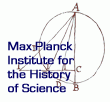The Project
This website "Reading the Inventory: The Possessions of the Portuguese Merchant-Banker Emmanuel Ximenez (1564-1632) in Antwerp" is part of an ongoing collaborative project conducted by Sven Dupré (Max Planck Institute for the History of Science/Freie Universität Berlin) and Christine Göttler (University of Bern). Our aim is to investigate the possessions, collecting activities, and intellectual pursuits of Emmanuel Ximenez within Antwerp's mercantile, artisanal, and learned cultures and within a larger network of cross-cultural commercial exchange, using the 1617 probate inventory of the moveable goods belonging to Emmanuel and his wife Isabel da Vega as a point of departure.
Conceived by Christine Göttler and Sarah Joan Moran (University of Bern/University of Antwerp) in collaboration with Sven Dupré, this website project is an important step towards that goal. It emerged from a two-day colloquium organized at the Rubenianum in Antwerp at the end of November 2012, where museum and university scholars from Austria, Belgium, England, Germany, Italy, the Netherlands, Portugal, and Switzerland met to discuss various parts of the Ximenez-da Vega inventory. In preparation of that conference, Sarah Joan Moran put together an English translation of the entire inventory, which has been refined and revised over the past year. The short essays, which are assembled here, have been developed from the discussions during and after the colloquium; they have been edited by Christine Göttler and Sarah Joan Moran.
The Ximenez d'Aragão were among the great Portuguese New Christian merchant houses whose overseas trading network extended to India, Africa, Brazil, and the Spanish Americas. The involvement of the Portuguese merchant community in maritime trade was instrumental in the rise of Antwerp as a 'world city' where new goods, new merchandise, and new knowledge and information were circulated and exchanged. Located in close proximity to the stock exchange (the city's economic center) and the Sint-Jacobskerk (Antwerp's wealthiest parish church), the Ximenez house, with its impressive façade, was a major landmark on Antwerp's most splendid street, the Meir. A period visitor would have seen this house as evidence of the Portuguese contribution to the transformation of Antwerp into the greatest city of commerce in the north (before the rise of Amsterdam) and a center of the manufacture and trade in luxury goods.
The 1617 inventory offers a window onto the rich material and intellectual environments of the early seventeenth-century Antwerp merchant elite, of which Emmanuel Ximenez was an important member. Most noteworthy among the almost fifty rooms of the house recorded in the inventory are the library of almost 1000 volumes, with its emphasis on "chymical," medical, and astrological works. The library also housed a significant number of books on architecture and fortifications, long-distance travel and exploration, and spirituality and religion; the "Distilleer- oft Alchimiecamer," used predominantly for the making of medicinal waters and oils; and the "Porceleynkamerken," the first space dedicated to the storage of porcelain documented for Antwerp. Particularly noteworthy among the luxury objects were the mathematical instruments, some created by the Antwerp mathematician and instrument maker Michiel Coignet; the rich and varied holdings of silverware; the fine collection of jewelry and of sumptuous clothing items; and the works of art, including Rubens's first maritime allegory, "Birth of Venus" that was probably designed according to Ximenez's wishes.
The inventory provides a unique opportunity to study the interrelationships between mercantile activity, intellectual inquiry, practices of kinship and religion, and engagement in conspicuous consumption within the cosmopolitan urban culture of early modern Antwerp.
Contributors
Birgitt Borkopp-Restle, Sven Dupré, Florike Egmond, Raingard Esser, Anne Gerritsen, Christine Göttler, Gerlinde Huber-Rebenich, Barbara Karl, Elaine Leong, Petra Maclot, Sarah Joan Moran, Sean Nelson, Lawrence Principe, Lorenz Seelig, Kim Siebenhüner, Koenraad Van Cleempoel, Pascale Vandervellen, Jeroen van Vaerenbergh, Dedo von Kerssenbrock-Krosigk, Gabriella Zuccolin
Research Assistants
Stefanie Wyssenbach, Aleksandra Zdravković; with the assistance of Ivo Raband and Jennifer Rabe
Technical Support
Reinhard Carsten Priber
Website Design Support
Kaj Lehmann
Research Support
Support for the website was provided by the University of Bern, a Marie Curie International Reintegration Grant (FP7 Marie Curie IRG, no. 256522, Christine Göttler, 2010-2014), and the Max Planck Institute for the History of Science, Berlin.
Publications
Dupré, Sven and Christine Göttler, eds. Knowledge and Discernment in the Early Modern Arts. London and New York: Routledge, 2017.
Dupré, Sven and Christine Göttler, Reading the Inventory: The Worlds and Possessions of the Portuguese Merchant-Banker Emmanuel Ximenez (1564-1632) in Antwerp (in progress).


